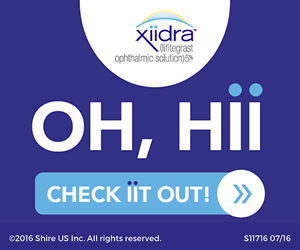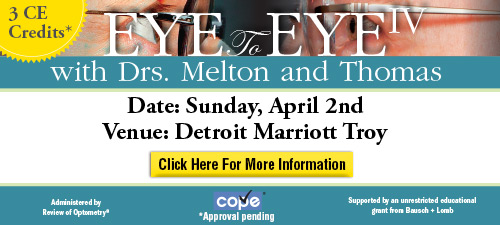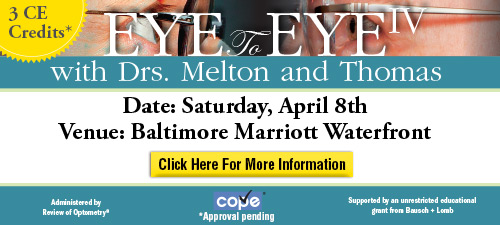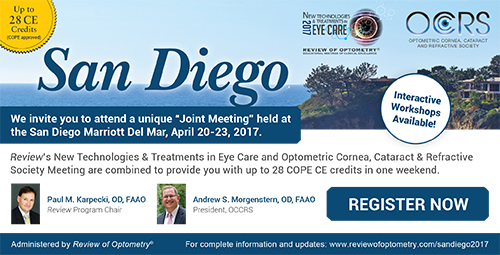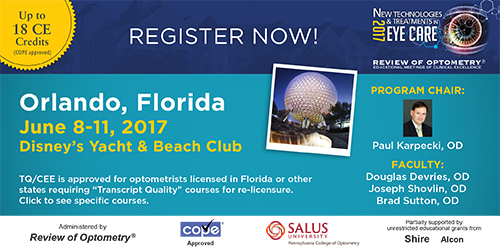
A
weekly e-journal by Art Epstein, OD, FAAO
Off the Cuff: Amazon Ambivalence
I love Amazon. From its roots as a novel online bookseller to its expanding presence in many aspects of modern life, Amazon has changed our world. What makes Amazon great is that you can get virtually everything from them. I’ve been an Amazon Prime member since the program’s inception, and I typically make several purchases a week. I figure one day I may make it into space aboard an Amazon rocketship. Along the way, I’ve learned a lot from Amazon. I try to understand what they’ve figured out and apply it to our practice. Amazon is all about convenience, predictability and customer service. I’ve done my best to emulate those qualities and, generally, have had surprising success. Yet, despite the amazing convenience and stellar customer service of Amazon, there is a dark side. Amazon destroys small businesses. Decades ago, Home Depot devastated local mom and pop hardware shops while Staples did the same to neighborhood stationary stores. But that’s nothing. Remember, Amazon sells everything.
|
|||||
|
|||
| Comparison of Self-measured Diurnal IOP Using Rebound Tonometry | ||||
Fifty-three medically treated eyes of 31 primary angle closure glaucoma (PACG) and 22 primary open angle glaucoma (POAG) patients with no previous eye surgery were recruited to document the diurnal intraocular pressure (IOP) profile with rebound tonometry performed by primary glaucoma patients in non-clinic environment. Diurnal IOP was measured five times per day at four-hourly intervals from 08:00 to 24:00 for one week in patients' study eye using rebound tonometry in a non-clinic environment. The diurnal IOP profiles were compared between PACG and POAG eyes.
For both PACG and POAG eyes, mean patient-measured IOP was highest in the morning, gradually decreased over the course of a day and was lowest by midnight. The diurnal IOP fluctuation ± 1 standard deviation (SD), as documented by SD in daily IOP values, was lower in the PACG group (1.6mm Hg ± 1.1mm Hg) than in POAG group (2mm Hg ± 1.2mm Hg). The mean trough IOP ± 1 SD was higher in the PACG group (12.9mm Hg ± 2.8mm Hg) compared with POAG group (11.5mm Hg ± 3.8 mmHg). The mean IOP level at midnight ± 1 SD in PACG group (14mm Hg ± 3.2mm Hg) was higher than that in POAG group (12.1mm Hg ± 3.7mm Hg). IOP in primary glaucoma patients was highest in the morning, and decreased over the course of a day in non-clinic environment. Treated diurnal IOP fluctuation seemed to be greater in POAG than PACG eyes. |
||||
SOURCE: Tan S, Baig N, Hansapinyo L, et al. Comparison of self-measured diurnal intraocular pressure profiles using rebound tonometry between primary angle closure glaucoma and primary open angle glaucoma patients. PLoS One. 2017;12(3):e0173905. |
||||
|
|||
| Contrast Sensitivity Measurements vs. Standard Visual Function Measurements in Primary Open-Angle Glaucoma | ||||
Ninety-four subjects with primary open-angle glaucoma participated in this study to evaluate the nature and extent of letter contrast sensitivity (CS) deficits in glaucoma patients using a commercially available, computer-based system (M&S Smart System II) and to compare the letter CS measurements to standard clinical measures of visual function. Each subject underwent visual acuity, letter CS and standard automated perimetry testing (Humphrey SITA 24-2). All subjects had a best-corrected visual acuity (BCVA) of 0.3 logMAR (20/40 Snellen equivalent) or better and reliable standard automated perimetry (fixation losses, false positives and false negatives <33%). CS functions were estimated from the letter CS and BCVA measurements. The area under the CS function (AUCSF), which is a combined index of CS and BCVA, was derived and analyzed. The mean (± SD) BCVA was 0.08±0.10 logMAR (∼20/25 Snellen equivalent), the mean CS was 1.38±0.17, and the mean Humphrey Visual Field mean deviation (HVF MD) was -7.22dB ± 8.10dB. Letter CS and HVF MD correlated significantly. BCVA correlated significantly with letter CS, but not with HVF MD. A subset of the subject sample (∼20%) had moderate-to-no field loss (≤-6dB MD) and minimal-to-no BCVA loss (≤0.3 logMAR), but had poor letter CS. AUCSF was correlated significantly with HVF MD. The present study is the first to evaluate letter CS in glaucoma using the digital M&S Smart System II display. Researchers wrote that letter CS correlated significantly with standard HVF MD measurements, suggesting that letter CS may provide a useful adjunct test of visual function for glaucoma patients. In addition, they added that the significant correlation between HVF MD and the combined index of CS and BCVA (AUCSF) indicated that this measure might also be useful for quantifying visual dysfunction in glaucoma patients. |
||||
SOURCE: Liu JL, McAnany JJ, Wilensky JT, et al. M&S smart system contrast sensitivity measurements compared with standard visual function measurements in primary open-angle glaucoma patients. J Glaucoma. 2017; Mar 22. [Epub ahead of print]. |
||||
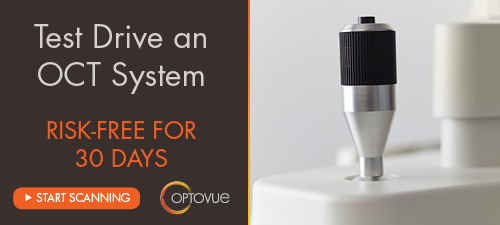 |
||
| Effect of Phacoemulsification on IOP and Medication Use in Glaucoma | ||||
For patients with comorbid cataract and primary open-angle glaucoma (POAG), investigators wrote that guidance is lacking as to whether cataract extraction and traditional filtering surgery should be performed as a staged or combined procedure. Achieving this guidance requires an evidence-based understanding of the effects of phacoemulsification alone on intraocular pressure (IOP) in patients with POAG. For this reason, investigators conducted a systematic review and meta-analysis to synthesize evidence quantifying the effect of phacoemulsification on IOP and the required number of topical glaucoma medications in patients with cataract and POAG. Database searches were last run on August 15, 2016, to identify potentially relevant studies. Identified articles were screened for relevance, and meta-analysis was used to compute postoperative mean and percentage reduction in IOP (IOPR%) as well as mean difference in topical glaucoma medications. The search strategy identified 1,613 records. Thirty-two studies (1,826 subjects) were included in quantitative synthesis. A 12%, 14%, 15% and 9% reduction in IOP from baseline occurred six, 12, 24 and 36 months after phacoemulsification. A mean reduction of 0.57, 0.47, 0.38 and 0.16 medications per patient of glaucoma medication occurred six, 12, 24 and 36 months after phacoemulsification. Investigators determined that phacoemulsification as a solo procedure lowered IOP in patients with POAG and reduced dependency on topical glaucoma medications. These effects appeared to last at least 36 months, with gradual loss of the initial effect noted after two years. Investigators wrote that certain populations appeared to experience much greater reductions in IOP than others and future work to identify these high responding patients was needed. |
||||
SOURCE: Armstrong JJ, Wasiuta T, Kiatos E, et al. The effects of phacoemulsification on intraocular pressure and topical medication use in patients with glaucoma: A systematic review and meta-analysis of 3-year data. J Glaucoma. 2017; Mar 22. [Epub ahead of print]. |
||||
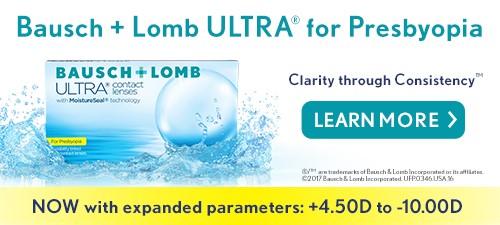 |
||
| News & Notes | |||||||||
Bausch + Lomb & Nicox Receive PDUFA Date for Glaucoma Candidate
|
|||||||||
| Shire Names Boyd Director of Market Development Shire announced that Joe Boyd joined the ophthalmics team as director of market development. Boyd has more than 20 years of experience in the pharmaceutical and medical device industry, playing a key role in building the sales and marketing, commercial operations, managed care, medical communication, medical affairs and compliance teams at various organizations. As director of medical development at Inspire Pharmaceuticals, Boyd provided strategic direction that prepared for entry into new markets. He most recently worked at Primus Pharmaceuticals where he was the director of commercial planning and operations, and led commercial initiatives designed to grow the business and enhance the company’s strategic initiatives across sales operations and professional affairs. Editor’s note: I’ve known Joe for many years. He has been one of optometry’s greatest advocates and is a welcome addition to the Shire team. Expect great things from Shire in 2017!
|
|||||||||
| Sjögren’s is a Daily Burden for Patients For most Sjögren’s patients, coping with the disease on a daily basis is challenging and limits these patients’ ability to function at home and in the workplace, according to a recent survey conducted by Harris Poll on behalf of the Sjögren’s Syndrome Foundation (SSF). Nearly 3,000 individuals (96% women) ages 18 and older years in the United States and diagnosed with Sjögren’s, shared their experiences as part of the nationwide Living with Sjögren’s survey, conducted between May 11, 2016, and July 11, 2016. Nearly half of individuals surveyed described dry eyes (54%), fatigue (54%) and dry mouth (50%)—the three most commonly reported symptoms of Sjögren’s—as having a major impact on their lives in the last year. Seven in ten (71%) respondents agreed that Sjögren's got in the way of their daily activities. A summary of survey findings can be found here: www.livingwithsjogrens.org |
|||||||||
| Coburn Introduces Huvitz Lensmeter Coburn Technologies’ new HLM-1 lensmeter with Wavefront Analysis Technology, manufactured by Huvitz, is designed to provide fast and accurate measurements on a cost-effective platform. Features include: Hartmann Sensor Wavefront Analysis Technology with more measurement points, expanded prism measurement range, facilitated measurement of darkly-tinted or mirrored sunglasses, a slim and compact design, auto lens recognition including single-vision and progressive lenses, improved progressive (multifocal) lens measurement, user-friendly interfaces and more. As well, the device meets or exceeds Medical Equipment Certificate, Class B standards. Read more. |
|||||||||
| FDA Clears Icare Tonometer for Patient Self-monitoring Icare’s HOME tonometer, approved by the FDA, is now available for use in the United States. The device, which received the CE mark in 2014, assists eye care professionals by providing clinical data on how patients’ IOP fluctuates throughout the day. It uses the patented rebound technology in other Icare tonometers and requires no specialized skills for patient use. Built-in EyeSmart technology performs automatic OD/OS recognition, and positioning is simplified by EasyPos technology using red and green light signals to help individuals correctly position the tonometer. An automated measuring sequence can take a single measurement or a series of six measurements with one button. No puff of air and no drops are required. Read more. Editor’s note: I love my Icare tonometer which we use constantly in the office The addition of the Home tonometer is a potential game changer. We finally have technology to measure diurnal variation and perhaps more importantly, it will allow greater patient involvement in their glaucoma care. |
|||||||||
|
Optometric Physician™ (OP) newsletter is owned and published by Dr. Arthur Epstein. It is distributed by the Review Group, a Division of Jobson Medical Information LLC (JMI), 11 Campus Boulevard, Newtown Square, PA 19073. HOW TO ADVERTISE |



